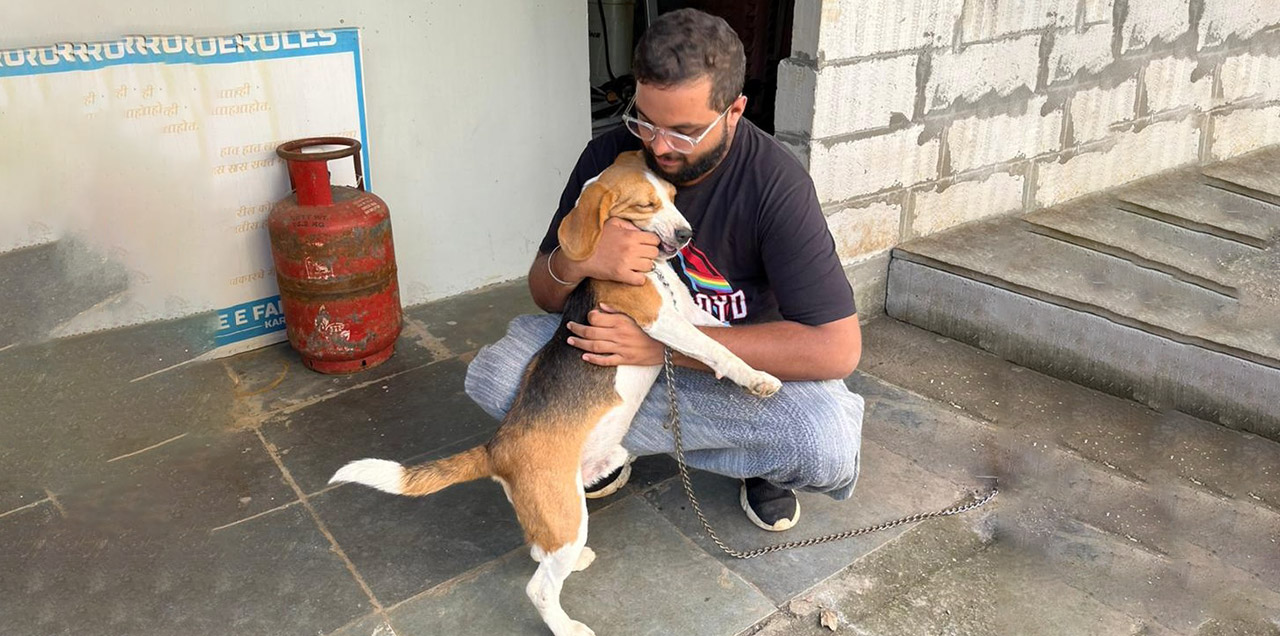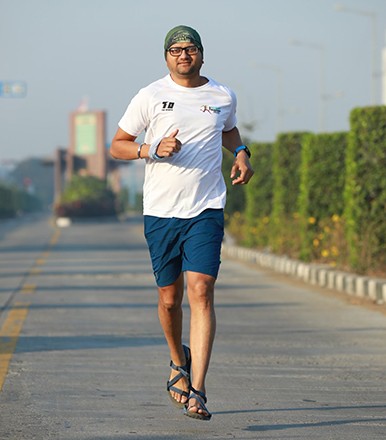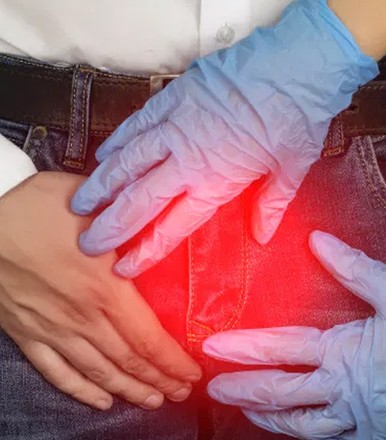Have you ever found yourself or someone you know paralyzed with fear at the very sight of a small street dog running in your direction? Or perhaps just the bark of an unseen dog is enough to startle and unsettle you? If so, there’s a good chance that you or your friend is suffering from Cynophobia, often defined online as the irrational fear of dogs. However, it’s anything but irrational. There is a psychology behind every fear, and at HFM, we are committed to improving the relationship between humans and dogs.
In an attempt to do just that, we decided to consult Nachiket Deshpande, a clinical psychologist, and a dog psychology and behavior training enthusiast, to rationalize something that the internet has termed irrational. Through his expert insights, we aim to understand Cynophobia, its symptoms, and the steps one can take to treat this condition effectively.
What is Cynophobia?
It is important to define the phobia before discussing it in detail. Hence, we started our interview with Nachiket by asking what, according to him, is Cynophobia.
Nachiket defines cynophobia as a “fear of animals mainly referring to dogs.” He adds that people suffering from this phobia showcase signs of “a lot of discomfort and showcase a lot of physical and psychological symptoms when they see or hear a dog.”
Symptoms of Cynophobia
Cynophobia can manifest through both psychological and physical symptoms. Here are some of the common physical symptoms:
- Palpitation: One of the most common symptoms of this phobia is that the suffering person suddenly becomes aware of his heartbeat. They feel like they can feel their heart thumping, or racing irregularly.
- Extreme physical fear: Another sign can be someone freezing at the sight of a dog, or the trembling and twitching with fear.
- Flight: Running away or shouting at dogs is perhaps the most common and overlooked symptom of them all.
We all know someone who does these things. Every family or friend group has that one person who fears dogs for no reason. Well, now we know that it’s not for no reason.
They are suffering from Cynophobia, and while these are physical symptoms that are visible or felt, there is a different set of psychological symptoms as well, listed below, which can only be felt by the phobic.
- Anxiety: Feeling anxious is a common psychological symptom that you are suffering from fear. This might manifest in physical symptoms like palpitation and panic within your body – making it heat up or turn cold at the very thought of dogs being around.
- Social Anxiety: Do you find it hard to forge a friendship with someone who has a dog? Or is your friend showing such symptoms?
According to Nachiket, this is one thing he has observed in most of his patients. They fear befriending people with dogs, worrying people will not understand their fear and will denounce them by saying things like, ‘Why are you afraid of dogs?’ This can reach a stage where people are even afraid to leave their houses, fearing the animals on the street.
-
Nightmare: Another important symptom to never overlook is a nightmare. They are the projection of your fear and anxiety that haunt you even when you’re asleep.
Triggers of Cynophobia
Now, you might ask how to identify whether someone is suffering from Cynophobia. The answer to this is made simple by the fact that you are now aware of the symptoms you need to be on the lookout for. All you need to do next is identify the situations in which a person’s fear can be triggered.
- Barking noises: No brownie points for guessing here. The first and most important trigger to any person with a fear of dogs has to be the barking sound that haunts them even in their sleep. And guess what? They don’t need to know that a dog is around to feel triggered. The barking sound is enough to get them all worked up.
- Watching dogs on screen: When it comes to fear, the line between the real and virtual world gets blurry, causing a person to get triggered by the presence of dogs, even on their TV or mobile screens.
- Active Dogs: The very idea of an active dog around is enough to trigger a phobia. The dog might not be doing anything; he might be lying alone in the corner of a room, but if the person has made eye contact with him, they will certainly feel afraid.
Common Causes of Cynophobia
After understanding the triggers and symptoms of this phobia, you might naturally wonder: what causes Cynophobia? What exactly leads someone to be so afraid of dogs? Interestingly, the person suffering from this fear doesn’t always need to have experienced a traumatic event involving dogs.
Some of the common causes of this phobia include incidents like:
- Being chased by dogs.
- Getting bitten by a dog or watching someone else get bitten.
- Watching a dog bark loudly, growl, or lunge.
According to Nachiket, people involved in such incidents have a “high chance of developing an immense amount of fear, which can later convert into a phobia.”
Further, he mentions that past trauma is a major reason behind people developing a fear of dogs. “Once an incident has happened, people start creating stories about it in their head and relive them every day. This creates an imprint of the incident on their brain. They continuously think about it – that is how fear develops and keeps increasing.”
Chances are that the event has made a home in their subconscious mind. Thus, when a similar situation arises, it triggers the person, and neurologically, they feel the pressure, the fear, and the physiological changes happening in their body.
Nachiket advises handling this situation carefully and properly; otherwise, he believes that the incident “gets imprinted on the mind over some time and becomes an issue in the long term.”
How to treat Cynophobia?
Just like any psychological issue, Cynophobia can also be treated only through psychotherapy and counseling.
Exposure therapy
Nachiket advises his patients to undergo exposure therapy, which is one of the most effective treatments. In this therapy, patients are involved in a step-by-step process of desensitization. Since the barking sound of a dog triggers them the most, the patients will be exposed to it. If it triggers the intensity of their fear, then they will be made to watch the dogs on screen (movies and videos).
Later, they will be asked to look at the actual dog from a distance, and then the distance between them will be reduced. This is followed by actual physical proximity with the dog. Only once it is established that the patient is no longer fearful of the animal does the interaction take place.
CBT: Cognitive Behaviour Therapy
CBT aims to “understand the behavioral pattern in the chain of thoughts and work on rectifying the chain of thinking” of the patient. Through this therapy, the aim is to make the patients aware of their thought processes around their triggers.
Later, some work is done on modifying their thought process regarding fear and helping them dampen the effect. Furthermore, they are also provided insights into how the animal thinks so that the patient can empathize with them and forge a better bond.
Overcoming Cynophobia begins with understanding its causes and symptoms. Recognizing triggers can lead to effective treatments, such as exposure and cognitive behavioral therapy. Approaching this fear with empathy and professionalism helps foster healthier human-dog relationships.
Addressing Cynophobia can help individuals reclaim peace of mind and enjoy a more balanced life free from the constraints of irrational fear. This journey benefits the individual and promotes greater harmony between people and their canine companions.
Email: dogaattherapy@gmail.com
Contact No: 9819206191
Instagram: https://www.instagram.com/dogaattherapy
Website: https://dogaat.com/














